Lobster fishing has been entrenched in our history for centuries. In colonial times, it was seen as peasant food made for the lower class citizens.
That notion has shifted dramatically since those times. Lobster is now one of the staple seafoods across the country and we’re lucky to have such an abundant resource right here in our New England waters!
Lobster can be made into a variety of dishes, from simple boiled lobster dinner to the more elaborate clambake. There’s no limit to what you can make with these tasty aquatic "bugs".
Many people don’t realize that fishing for these crustaceans is not only for the commercial fleet. Recreational fishermen, like myself, can do it too.
In this article, I'll share with you 8 tips for getting started recreational lobstering in Massachusetts.
Tip 1: Know What You're Getting Into
Recreational lobster fishing is a big investment of time and money for a beginner. I am fortunate to have easier access to the ocean than most, but this does not make the time, labor, and money any less demanding.
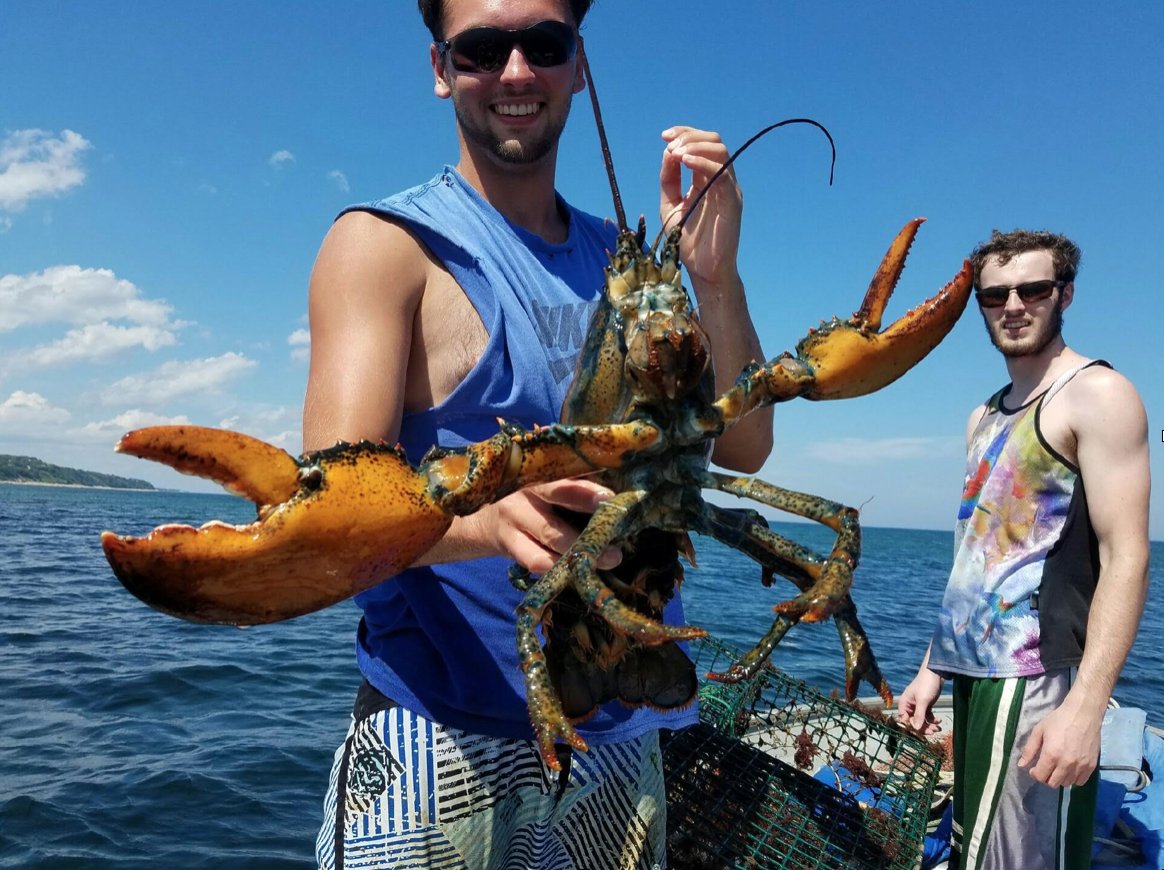
There are many components that add up in lobstering-between gear, rope, floats, gas etc, so you may ask yourself is this worth the investment? Would it be easier and cheaper for me to buy them from the store?
The answer to that question is yes, but the experience and memories you make while lobstering is like none other.
Each lobster trap has its own little surprise, whether that be 5 keeper lobsters in one trap, or even 5 keeper tautog. You never know what lies inside!
Tip 2: Learn the Regulations
Lobsters are a highly regulated fishery and there is not much leeway if you’re found to be in violation.
There are many regulations in terms of minimum and maximum size requirements, what you can and can’t keep (i.e. egg bearing female lobsters and V notched female lobsters) and gear requirements.
For example, if you look closely at the underside of the lobster in the photo below, then you will see it is bearing eggs. A lobster like this one must be released.
There are also different regions in which recreational lobstering is permitted. The map below is up to date as of March, 2021.
In the next two images you'll see the different regulations for size, gear, etc. You can click on an image to open a large resolution version of each table.
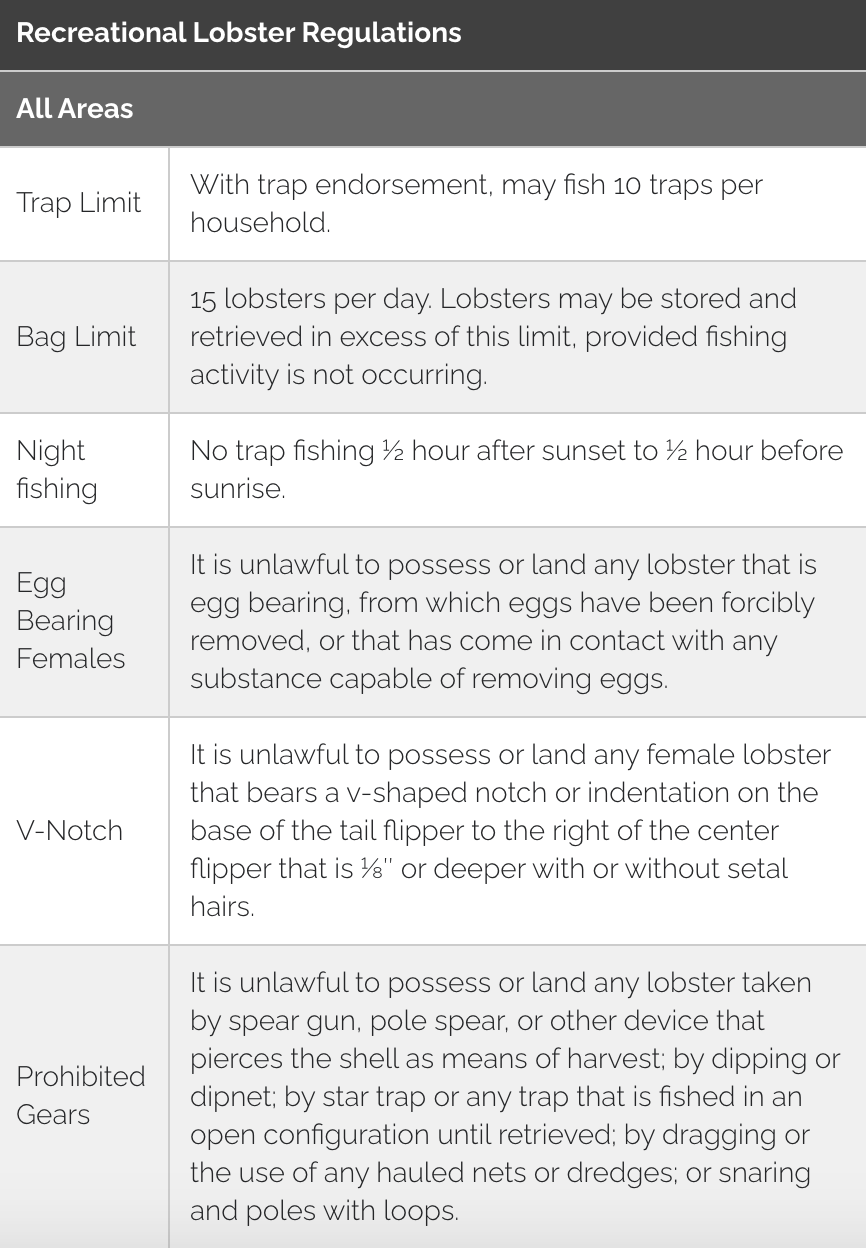
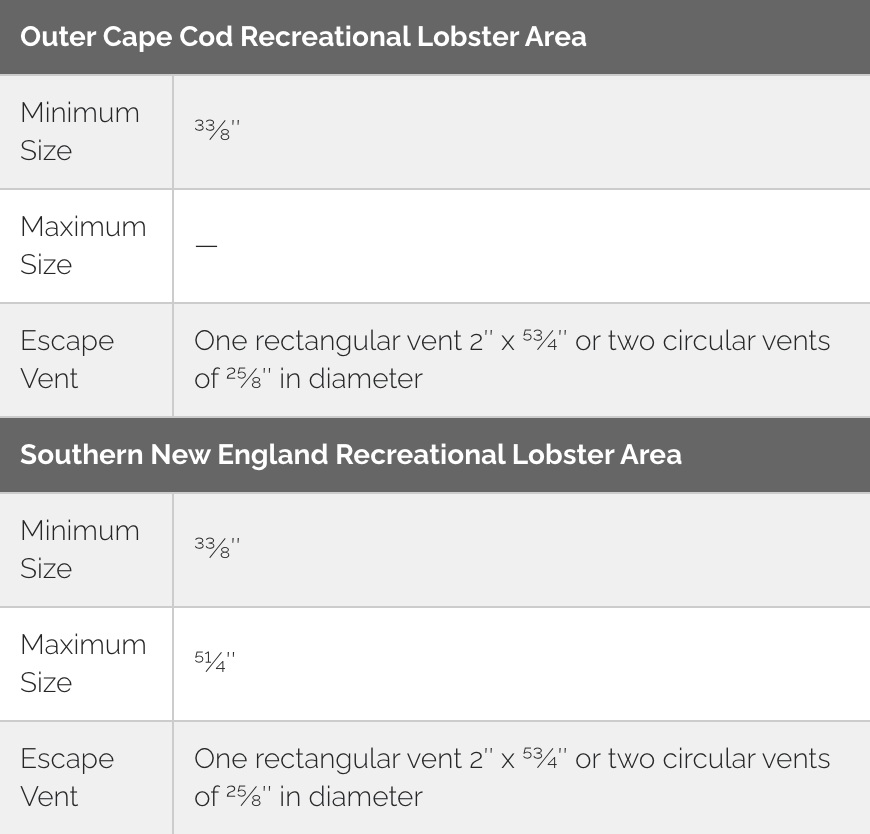
You can also click here to see the entire list of regulations found on the Massachusetts Saltwater Regulations website.
Tip 3: Bait 101
Being an avid recreational lobsterman, I often ask fellow fishermen what they do with their fish carcasses, and I always cringe when the answer is that the carcasses ended up in the trash can.
Where others see trash, I see a potential meal on my plate. Whenever the opportunity presents itself I always save those smelly fish carcasses for use as lobster bait.
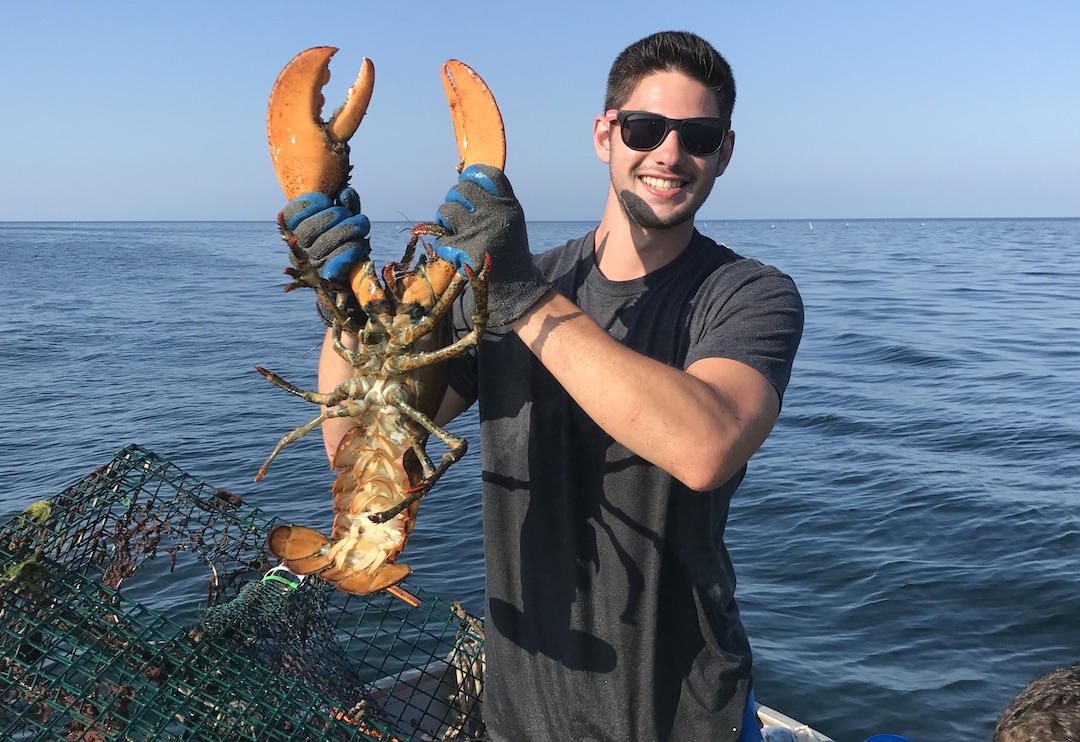
You can also buy flats of mackerel or pogies at most bait shops, but it can get costly. Another idea is to ask around seafood markets or processing plants where leftover fish racks and skins often go to waste.
I have tried numerous types of fish carcasses, but in my opinion the best lobster bait are the "very oily species" such as bluefish and mackerel. Stripers and any type of bottom fish will also make for great bait.
Some of the more interesting baits I’ve experimented with in the past would include:
These baits tend to work very well for crabs, and can be effective for lobsters as well. However, I would recommend sticking with oily fish carcasses for the best results.
I also highly recommend investing in a freezer strictly for your lobster bait. I would not store the bait with your groceries and food. If you have no other options, then wrap the bait up well, because you don’t want those fish carcasses leaking everywhere.
Tip 4: Lobster Locations & What To Look For
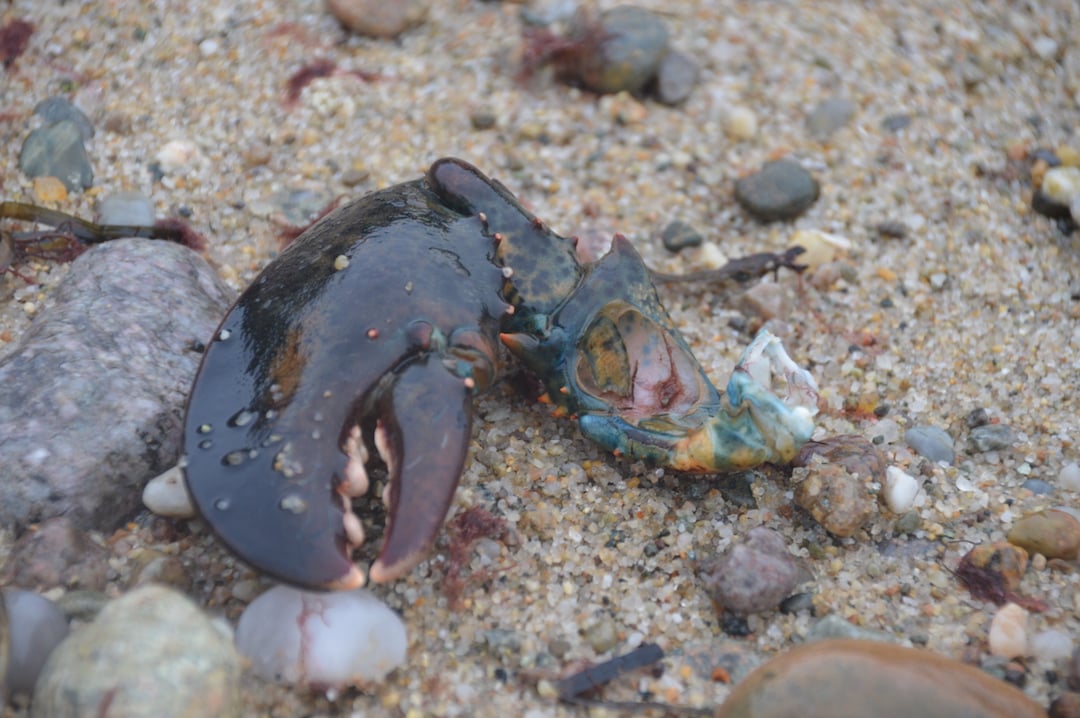
Lobsters are nocturnal scavengers and they don’t often venture out of their burrows during the day.
I always fish my traps near structure, which is often rocks and boulders. Lobsters burrow under rocks and hang in them during the daytime. At night is when they venture out in search of food.



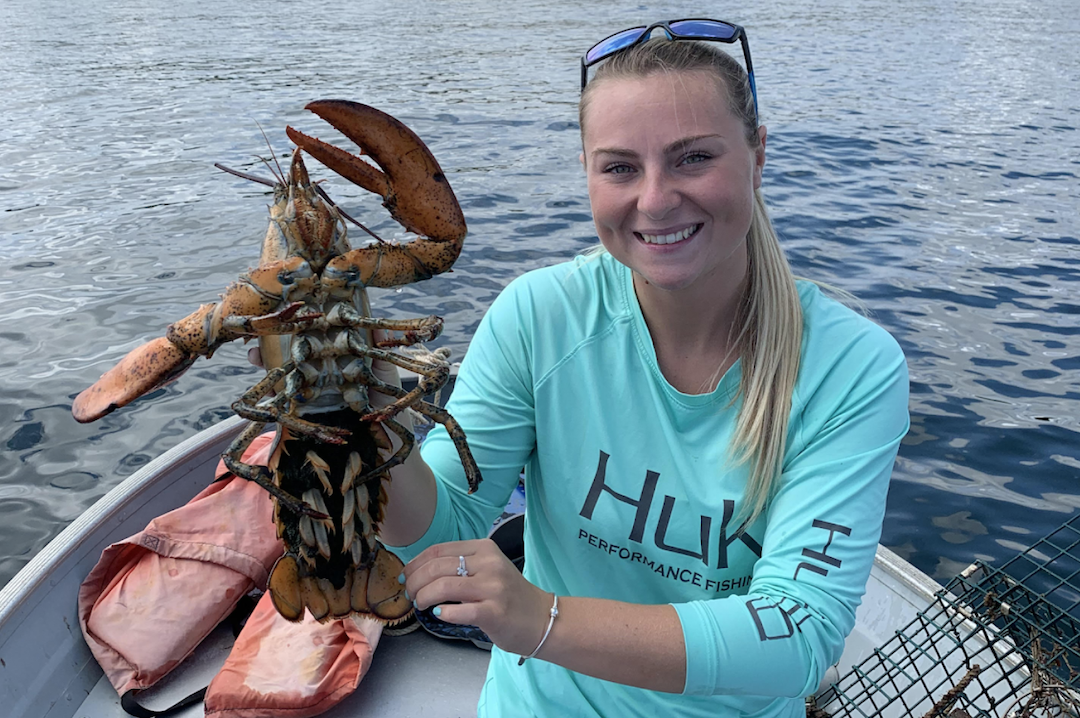
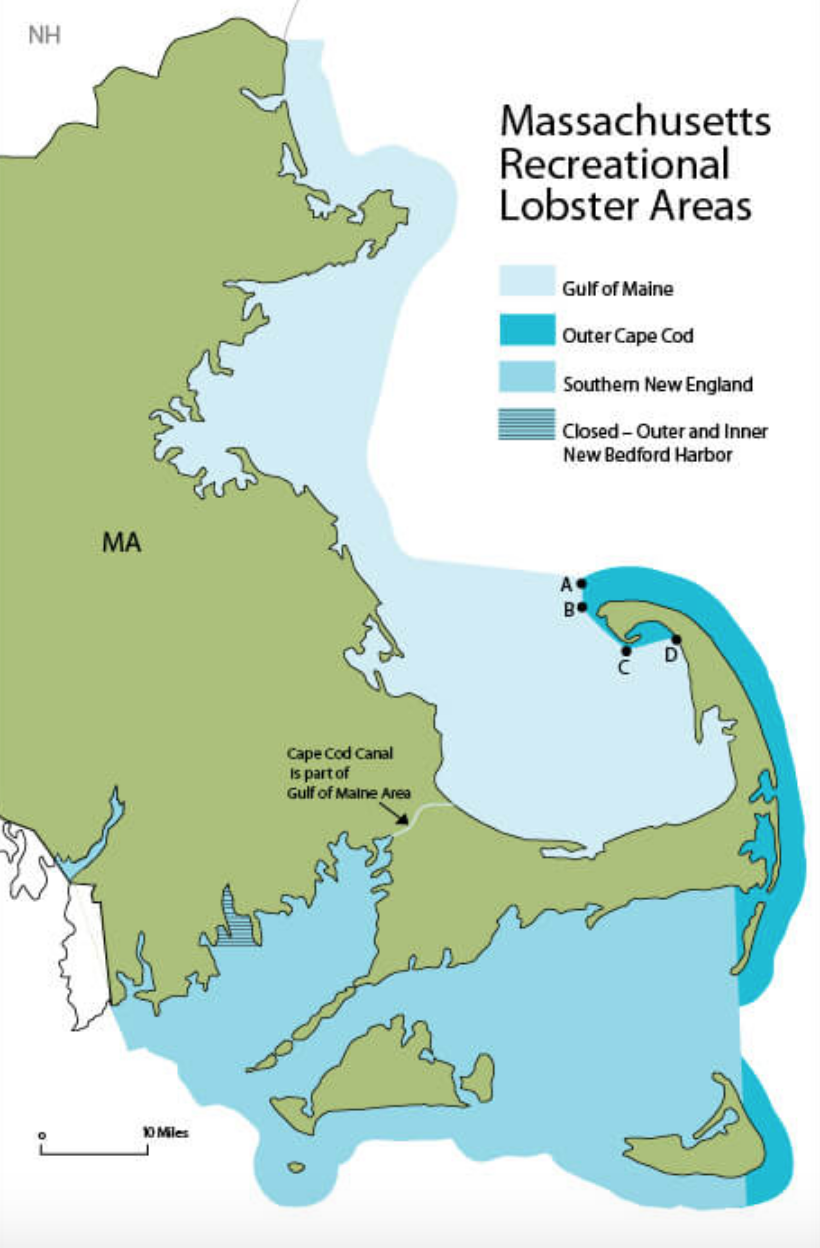

Hi there, my son has always wanted to experience lobster fishing. We will be in Boston/Gloucester next weekend. Any recommendations for a local fisherman that might be open to the two of us joining for a couple hours? I haven’t had any luck with joining a tour.
Very nice Christy! I don’t know these guys personally, but have you tried bostonlobstertours.com? Or up in Gloucester, you could try capeannharbortours.com, cbcharters.com/lobster-tour, toursofdistinction.net/tours/day-trips-2023/gloucester-lobster-cruise/, capeannfoodietours.com/land-and-sea-tour or some of the tours shown on this page.
Thank you Charlie for this awesome introduction to lobstering. I have successfully launched my first recreational lobster pot. From getting the license to obtaining and rigging all of the gear this article has it all. I have no only successfully launched my first trap, but caught my first male keeper Lobster as well as some delicious giant Jonah Crabs. Thank you Charlie!
I believe you need to tag your traps with your license number. Can you confirm that and specify some good sources for durable customizable tags?
Hey Bob,
I’m sure Charlie will chime in here, but I figured I would make a quick reply also. I don’t do much recreational lobstering, but I believe you are correct that traps must be marked with the owner’s permit number.
I did a quick search online and I found this company which specializes in lobster pot tags. It could be worth checking out. Here’s a link https://www.topmetags.com/
LMK if I can help with anything else. ?
Thanks Ryan, I did contact Top-ME (located in Brunswick Maine). They definitely have a quality product. I only need a few so the minimum order of 100 at 42 cents ($42) each plus $15 setup charge is a little more than I wanted to pay. Maybe I’ll try a couple metal engraved tags.
Minimum order is 100 tags plus set up fee and shipping which is about $65 to $85 depending on whether you get flat or clip on tags. Looks like a great company with a great product. Those tags should hold up to the severe marine corrosion and plant growth that happens. I’m going to try to find a lower cost alternative though. Thanks for taking the time to respond. Hope all is well with you Ryan.
Hi Robert,
I know you need orange ID tags and red top can do custom ones for you at their shop!
Going to give it a try next summer I’m 70 a couple of traps my grandsons will love it Nantucket sound off chatham
Sounds awesome Jim! Let us know how you do. 👍 Another one of our members, Bruno Demir, keeps his traps in Nantucket Sound off Chatham. We recorded a podcast with Bruno about his lobstering experiences which you can listen to by going to this page. We also have some posts in our forum about lobstering in Nantucket Sound. Here is a link to the forum posts, in case you are interested in checking them out.
Thanks Jake.Great article & tips/points. I Haven’t done it for awhile but Reminded me how rewarding lobstering is! I’ll be soaking my traps this coming year!
Thank you Charlie. I enjoyed pulling my 10 traps as a teen in the 60’s. It was so much fun, and I was so lucky fishing that I gave many bugs away. Really enjoyed your post. All my best. Jake
Thanks Jake I appreciate it! I find myself giving more away than enjoying them myself. It’s what the whole experience is all about in my opinion!
What an awesome article I myself hauled rec pots for grand father till I was 18. Now at 30 I just got my own boat and rec licsene and will be taking my 2 boys out to share with them one of the greatest experiences the ocean has to offer thanks again for that article I enjoyed the good read.
Thanks Chris! I love hearing your passing it on to your two boys, I find kids really enjoy going out lobstering. It is a great starting point to getting kids out on the water.